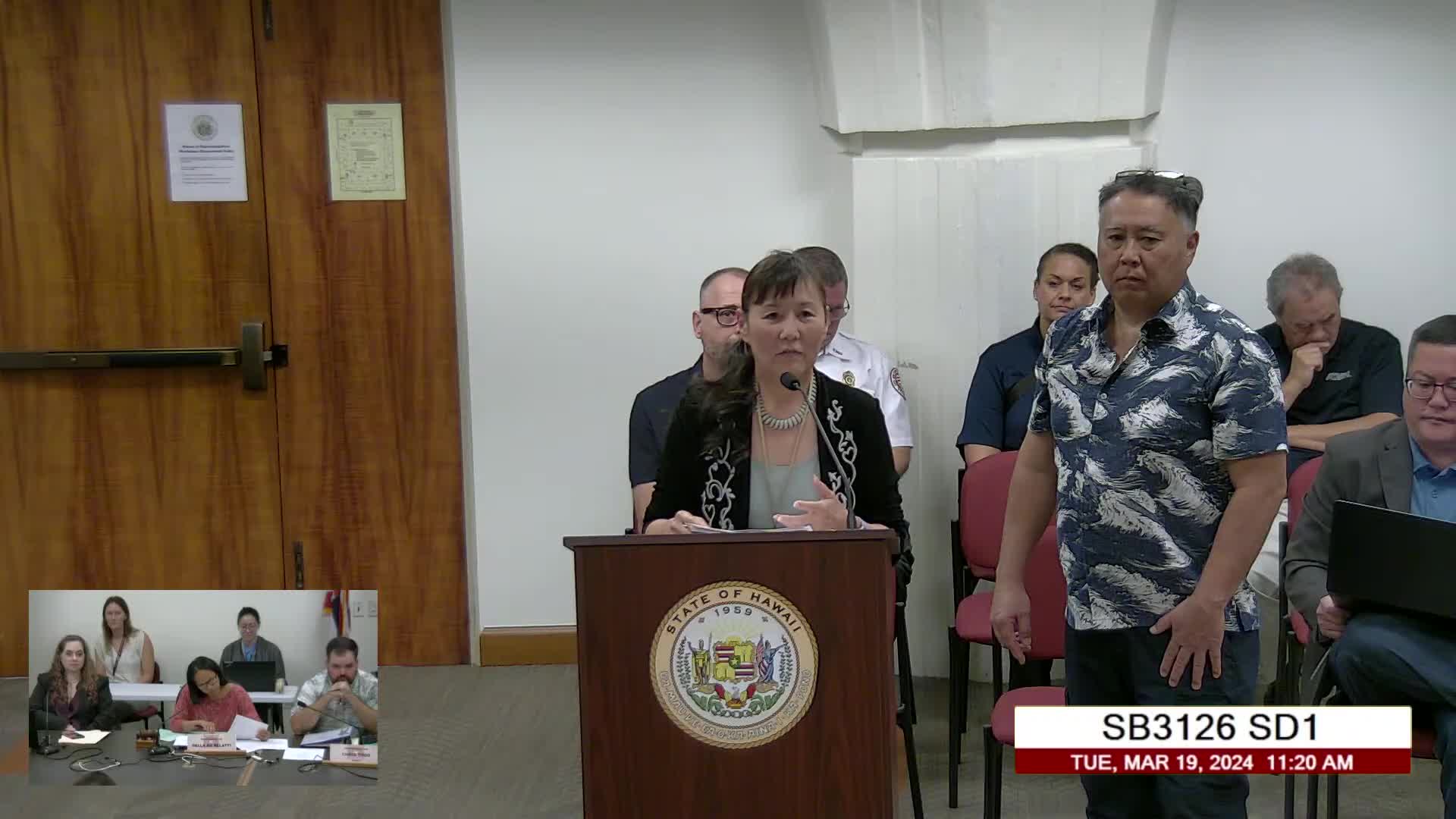Hawaii addresses air medical services and funding for Big Island helicopter operations
March 20, 2024 | House Committee on Transportation, House of Representatives, Legislative , Hawaii

This article was created by AI summarizing key points discussed. AI makes mistakes, so for full details and context, please refer to the video of the full meeting. Please report any errors so we can fix them. Report an error »

The HLT/TRN Public Hearing held on March 19, 2024, focused on critical discussions surrounding air medical services in Hawaii, particularly the need for improved access and response times for emergency medical situations on the neighbor islands.
Key points raised during the meeting included the significant delays in ambulance response times, with some patients waiting up to 12 hours for medical assistance. This highlighted the urgent need for a reliable backup system, especially if Hawaii Life Flight services are unavailable. The proposed solution involves establishing a redundant air medical service to ensure timely responses to emergencies.
Financial aspects of the air medical services were also a major topic. It was noted that the cost of operating a helicopter unit could reach approximately $4 million annually, excluding the initial purchase costs, which have been covered by private donations. The discussion indicated that state funding of around $2 million would be necessary to support the operation of one helicopter unit, emphasizing the shared financial responsibility between counties and the state.
The meeting also addressed the complexities of insurance reimbursement for air medical services. While medical insurance does cover some costs, the reimbursement amounts are often minimal compared to the actual expenses incurred. Participants expressed the importance of tracking these reimbursement costs to ensure financial viability.
Additionally, the meeting underscored the varying needs and existing resources across different counties. For instance, Kauai currently lacks rotary assets for evacuation, while the Big Island has received a helicopter donation. Each county's unique circumstances necessitate tailored solutions rather than a one-size-fits-all approach.
In conclusion, the discussions at the hearing revealed a pressing need for enhanced air medical services in Hawaii, with a focus on funding, insurance reimbursement, and the individual needs of each county. As the state moves forward, these considerations will be crucial in developing effective emergency response strategies.
Key points raised during the meeting included the significant delays in ambulance response times, with some patients waiting up to 12 hours for medical assistance. This highlighted the urgent need for a reliable backup system, especially if Hawaii Life Flight services are unavailable. The proposed solution involves establishing a redundant air medical service to ensure timely responses to emergencies.
Financial aspects of the air medical services were also a major topic. It was noted that the cost of operating a helicopter unit could reach approximately $4 million annually, excluding the initial purchase costs, which have been covered by private donations. The discussion indicated that state funding of around $2 million would be necessary to support the operation of one helicopter unit, emphasizing the shared financial responsibility between counties and the state.
The meeting also addressed the complexities of insurance reimbursement for air medical services. While medical insurance does cover some costs, the reimbursement amounts are often minimal compared to the actual expenses incurred. Participants expressed the importance of tracking these reimbursement costs to ensure financial viability.
Additionally, the meeting underscored the varying needs and existing resources across different counties. For instance, Kauai currently lacks rotary assets for evacuation, while the Big Island has received a helicopter donation. Each county's unique circumstances necessitate tailored solutions rather than a one-size-fits-all approach.
In conclusion, the discussions at the hearing revealed a pressing need for enhanced air medical services in Hawaii, with a focus on funding, insurance reimbursement, and the individual needs of each county. As the state moves forward, these considerations will be crucial in developing effective emergency response strategies.
View full meeting
This article is based on a recent meeting—watch the full video and explore the complete transcript for deeper insights into the discussion.
View full meeting
